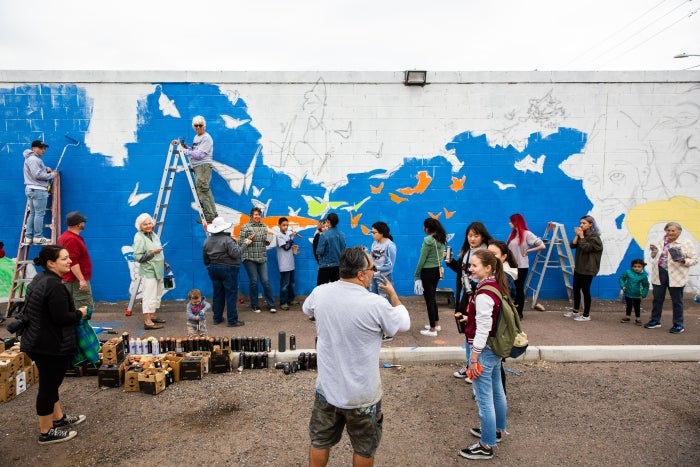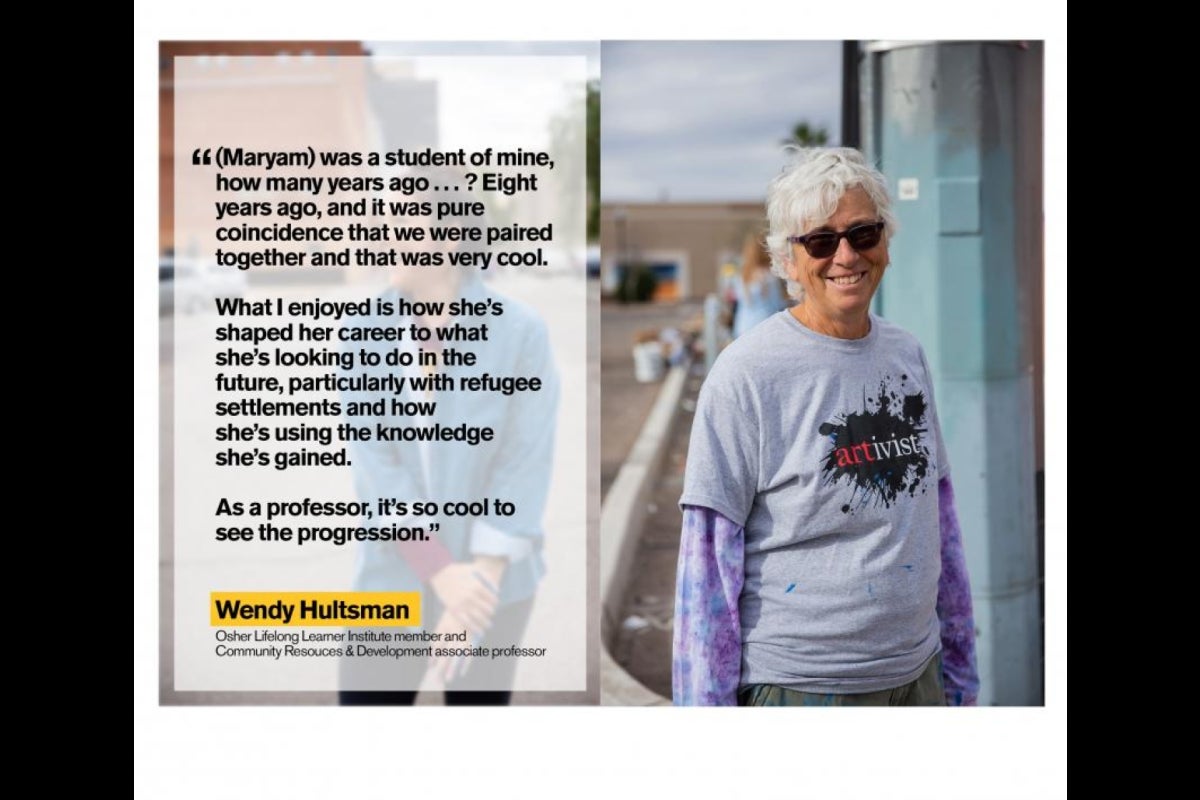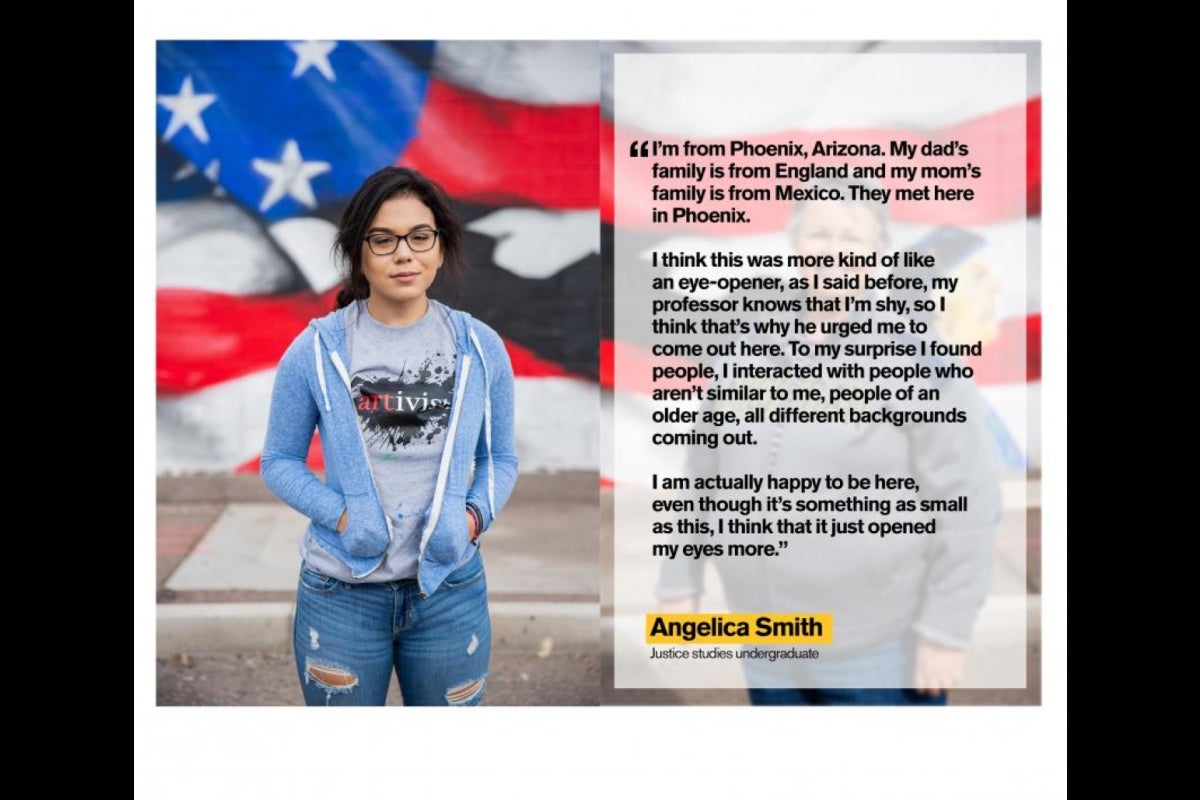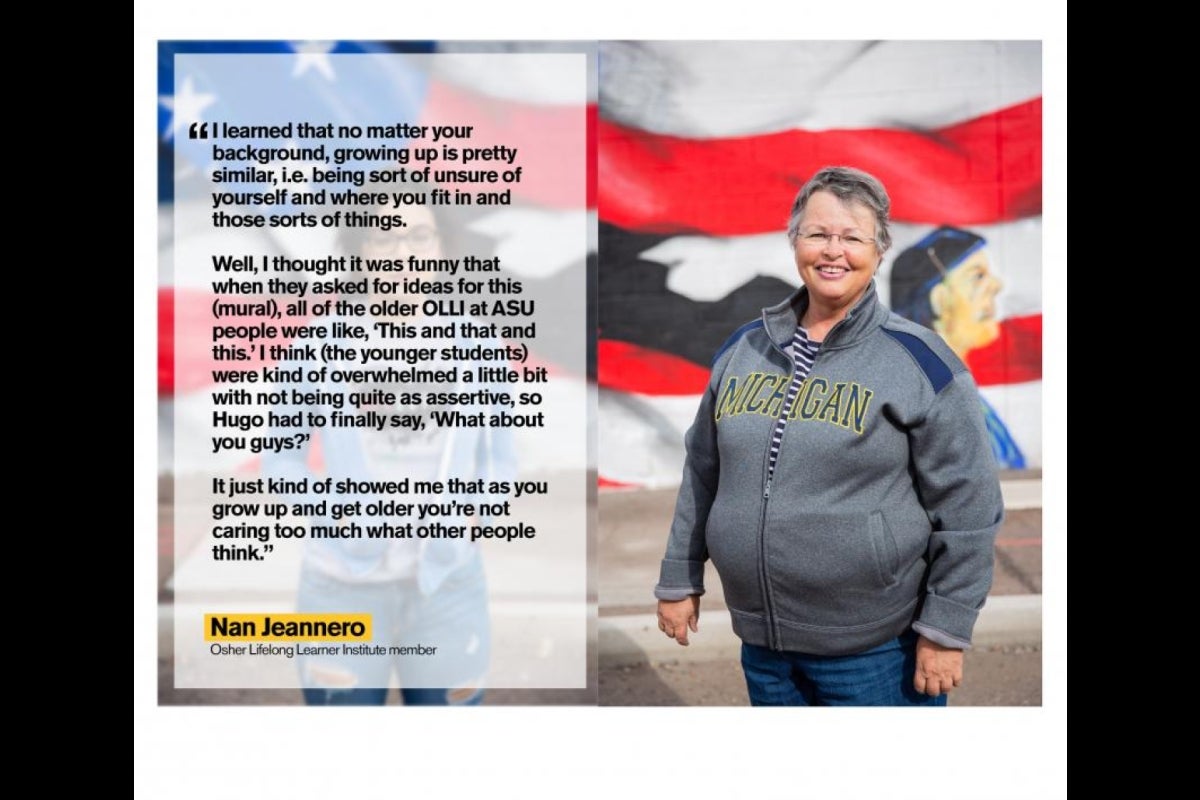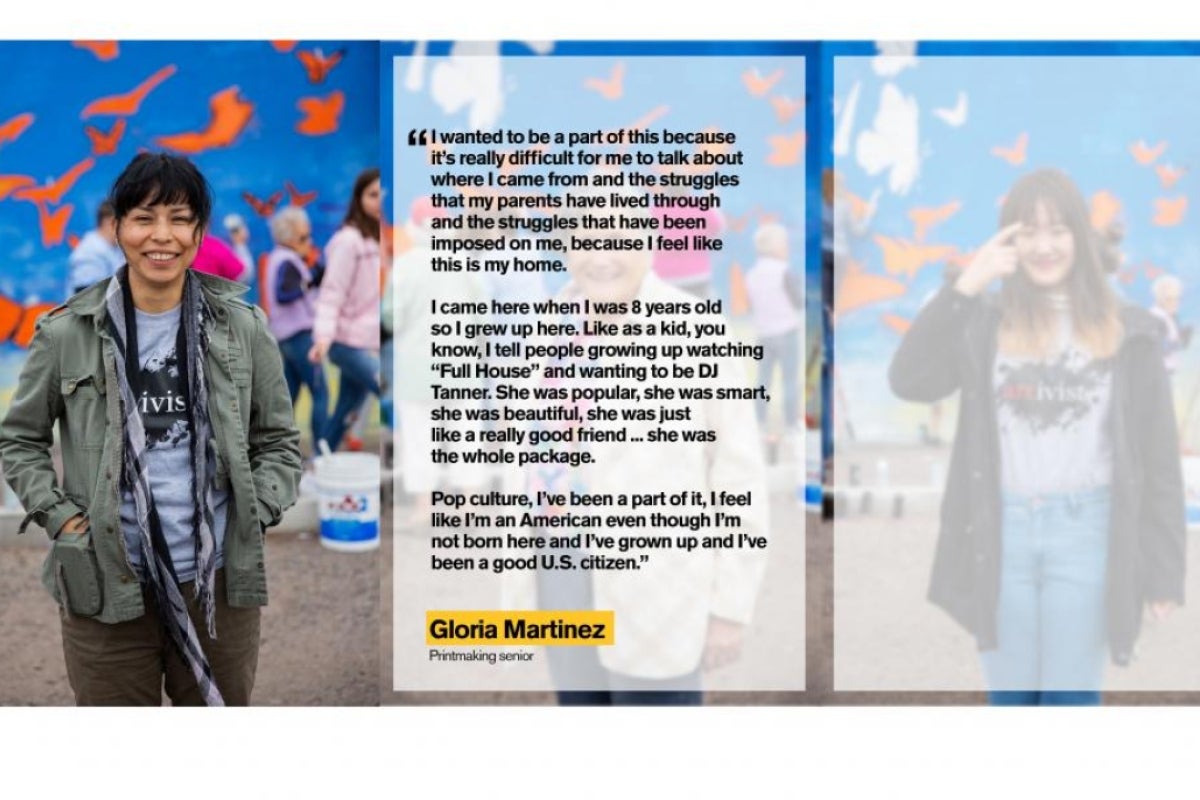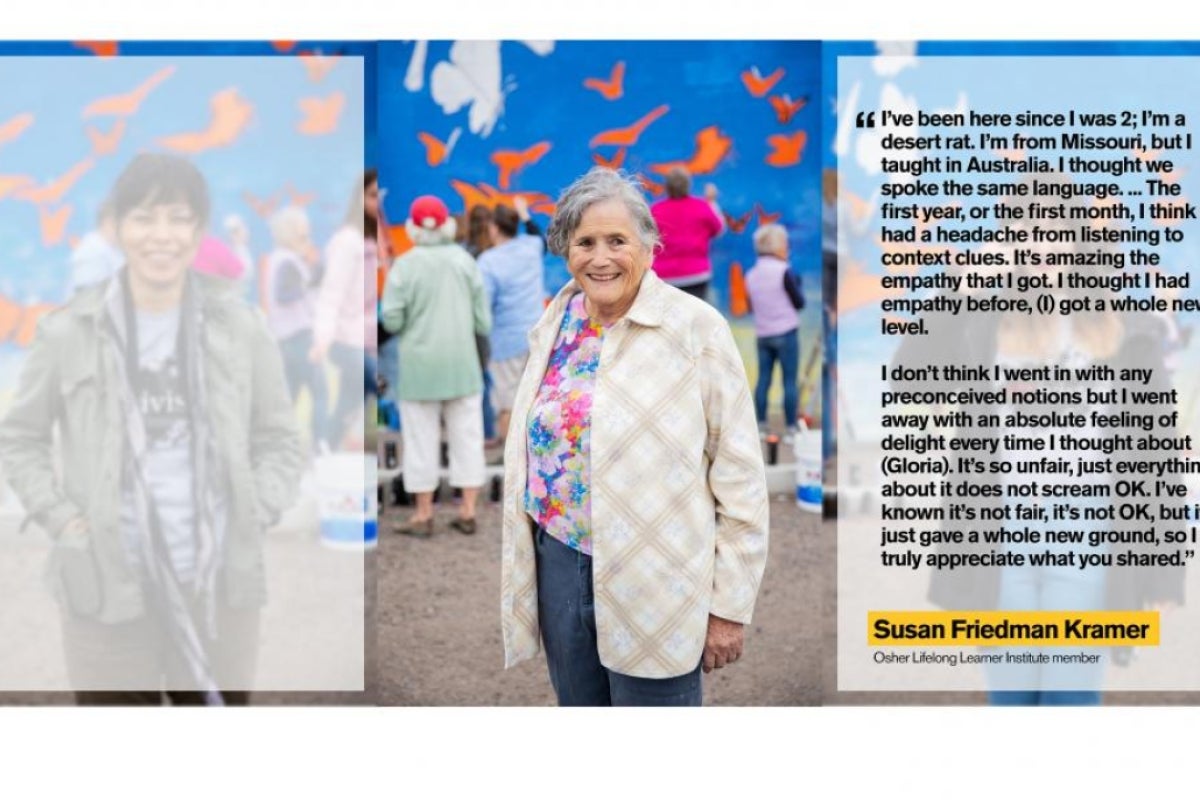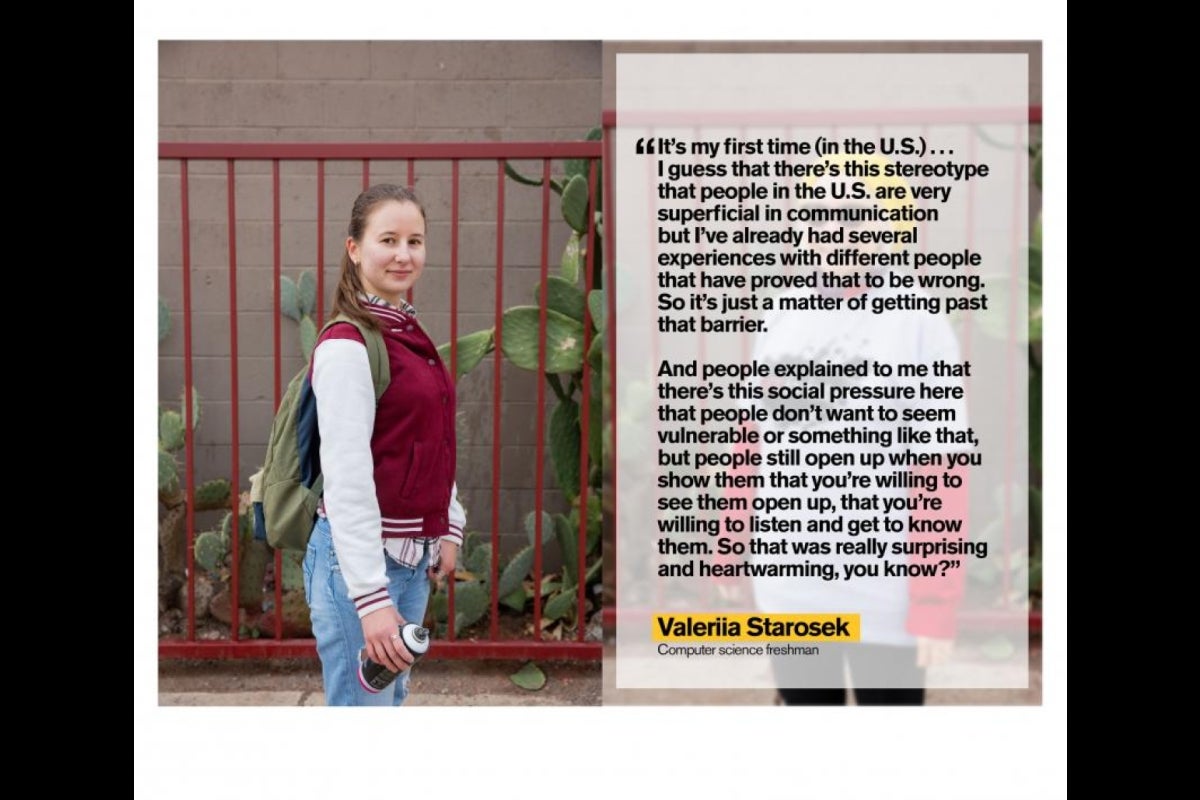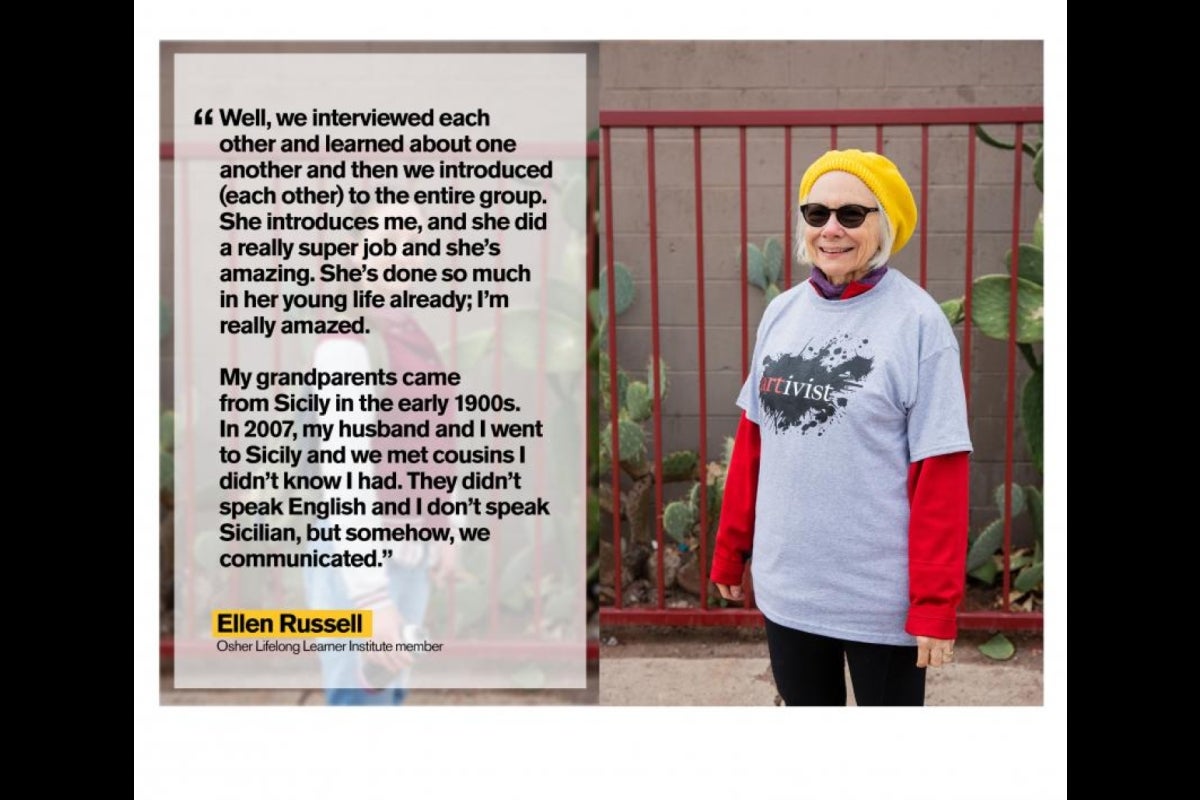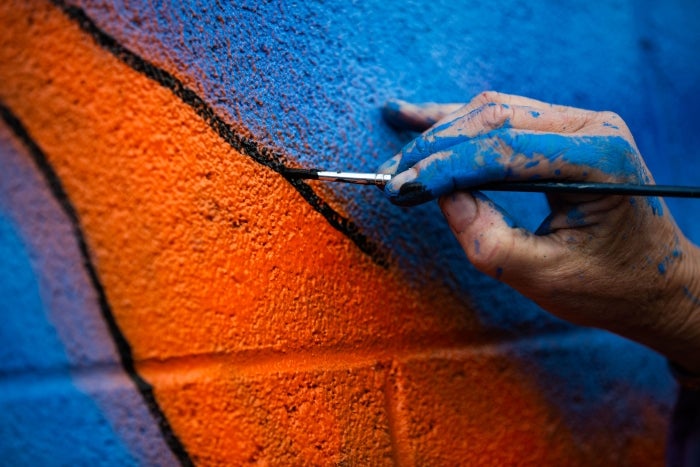Perceptive residents of downtown Phoenix may already be aware of the latest mural to crop up in the city’s ever-growing collection. Located in the parking lot of the Lincoln Family YMCA, it depicts a young girl holding a cage from which a constellation of monarch butterflies bursts forth. At the other end are the faces of Americans of all ages and creeds — from Eastern-European Jews to Mexican braceros to Muslim Congresswomen — whose lives have been touched by migration.
“We all have some type of migration story,” said Arizona State University sociology undergrad Kira Olsen-Medina, looking on as a diverse group of people gathered on Sunday to bring the mural to life. “We are a nation of immigrants.”
Artist Hugo Medina (center) coordinates student and community painters as they work on their mural at the downtown Phoenix YMCA parking lot on Dec. 2, 2018. The Osher Lifelong Learning Institute paired with the ASU Humanities Lab to bring together students, both international and American, and individuals aged 50-plus to talk about experiences of immigration and then relay those stories onto a mural coordinated by Medina. Photo by Deanna Dent/ASU Now
The undertaking was one of four student projects to come out of the Humanities Lab “Facing Immigration” course co-taught by School of Social Transformation Associate Professor Sujey Vega and School of International Letters and Cultures German Instructor Christiane Reves.
Just like any science course, Vega said, humanities courses should also have a lab component that puts students to work outside the classroom to help them understand big-picture issues.That’s the thinking behind the creation of the Humanities Lab, which also offers such courses as “Re-envisioning Food Systems,” “The Future of Cars” and “Rebuilding Puerto Rico.”
“It’s not just about absorbing information but getting it out there,” she said.
Students in the Facing Immigration course were asked to consider how they might address the topic of immigration in their community, and decided on educational ventures. Then they broke up into four project teams, each addressing a different age group.
Olsen-Medina and teammates Zoe Lacey, Zhulin Li, Angelica Penuelas and Brittany Romanello decided to focus on the elderly. So when Olsen-Medina’s husband, mural artist and Osher Lifelong Learning Institute faculty associate Hugo Medina, told her about a scholarship the OLLI at ASUThe mission of the Osher Lifelong Learning Institute at Arizona State University is to provide university-quality learning experiences for adults ages 50 and over through diverse classes, campus-based learning opportunities, and civic engagement initiatives. was offering specifically for an intergenerational project and offered to help out, it was as if the stars had aligned.
With an experienced artist on board and funding in place, the team went about designing the project curriculum.
“The idea was for students to use their own talents and connections to bring this topic into the community,” Reves said.
Other student projects addressed access to health services for immigrants and refugees, used digital storytelling to relay immigration stories and engaged middle-schoolers by drawing and exchanging zines of their stories.
Olsen-Medina and her team proposed a two-part project: Part one consisted of a storytelling workshop in which 10 OLLI at ASU members paired up with 10 international ASU students for cross-generational immigration conversations where they discussed their backgrounds, got to know each other and brainstormed content for the mural.
“We wanted to cross those generational gaps but also wanted to maybe speak a little bit to the similarities of those two groups of people who might seem so different but actually really aren’t,” said Lacey, a gender studies grad student.
The experience inspired many of the OLLI at ASU members to research their own family immigration stories. Some who already knew their family immigration stories but were separated from them by several generations reported feeling a new sense of appreciation for the challenges their ancestors faced after speaking with their younger counterparts, whose immigration stories were far more recent.
“This is the most amazing woman, she just sparkles,” said OLLI at ASU member Susan Friedman Kramer of Gloria Martinez, a print-making undergrad who came to the U.S. illegally at the age of 8. “I (thought) I knew a lot about how hard that would be, but I had no clue until I was listening to (her) story.”
Friedman Kramer has lived in the Valley since she was 2 years old (she calls herself a “desert rat”) but said of her grandparents who came from Russia: “They dealt with people not wanting them. It seems any immigrant group is unwanted.”
Martinez nodded as she listened to her but became emotional when recounting her own youth and her desire to be considered a true U.S. citizen.
“It’s really difficult for me to talk about where I came from and the struggles that my parents have lived through and the struggles that have been imposed on me, because I feel like this is my home,” she said. “I came here when I was 8 years old, so I grew up here.”
During part two of the project — paint day — classical music played as Friedman Kramer, Martinez and others shook cans of spray paint, stabilized ladders and considered the placement of a butterfly’s wings.
School of Community Resources and Development Associate Professor and OLLI member Wendy Hultsman fills in the details on butterflies on the YMCA parking lot mural on Dec. 2, 2018. Photo by Deanna Dent/ASU Now
Their smiles and easy laughter belied the darker side of the stories behind the picture they were painting. But that’s sort of the point.
“A lot of the people here come from completely different backgrounds but they all have a lot of commonalities in their stories and in the human element of what it means to migrate and the challenges that are faced,” Olsen-Medina said. “So even though they all have very different stories, they’re able to connect on many different levels, which is really beautiful.”
More Arts, humanities and education

Grand Canyon National Park superintendent visits ASU, shares about efforts to welcome Indigenous voices back into the park
There are 11 tribes who have historic connections to the land and resources in the Grand Canyon National Park. Sadly, when the park was created, many were forced from those lands, sometimes at…
ASU film professor part of 'Cyberpunk' exhibit at Academy Museum in LA
Arizona State University filmmaker Alex Rivera sees cyberpunk as a perfect vehicle to represent the Latino experience.Cyberpunk is a subgenre of science fiction that explores the intersection of…

Honoring innovative practices, impact in the field of American Indian studies
American Indian Studies at Arizona State University will host a panel event to celebrate the release of “From the Skin,” a collection over three years in the making centering stories, theories and…

